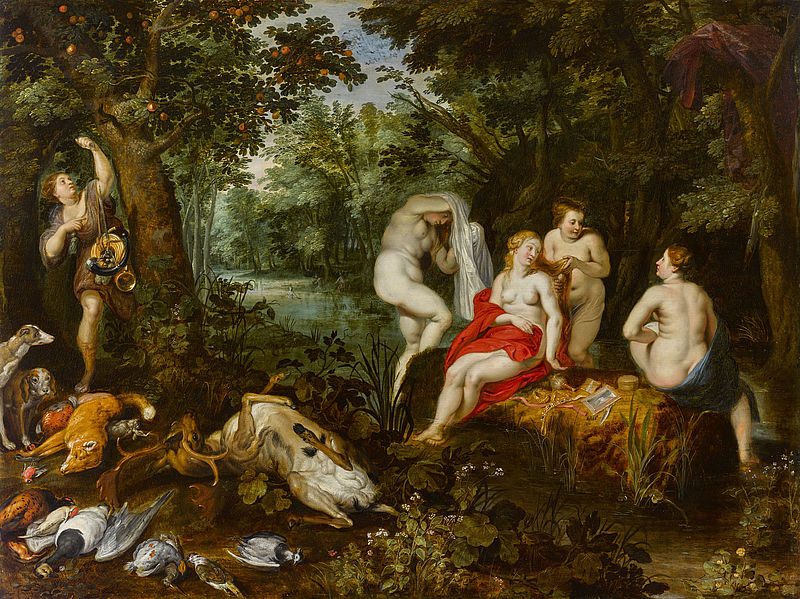Diana, Resting after the Hunt
Hendrik van Balen (1575 - 1632)
Framesize 83.30 x 105.50 x 6.00 cm
Van Balen’s figures nearly always have a deeper allegorical or mythological significance.
This woodland bathing scene shows Diana sitting on a rock amid her attendants, at a cleansing ritual. A focal point is Diana’s loose vermilion drapery, symbolising her divinity and her dominant role among the nymphs. Her status as virgin goddess of the hunt is illustrated by the still life in the foreground showing the kill with hounds, and hunting-horns being hung on a tree.
Female figures at their toilet frequently offer an attractive motif for nude painting – the actual subject of this work. Powder puff, comb, mirror and scissors are arranged as a still life together with fine jewellery. The thick foliage of the trees and the darkly looming cliff shield the group from view, and separate it from the vague figures bathing in the background river landscape.
The fair complexion of the sensuously-formed bodies à la Rubens contrasts with the dense woodland, as though the figures had been added subsequently. This may explain the conjecture that three artists were at work here: Jan Brueghel the Elder for the landscape, Frans Snyders for the animals, and Hendrik van Balen for the nudes.
Delicate nuances of pink, orange, blue, ochre and grey bring out the feminine curves in baroque opulence. Typical of Dutch fine painting are the shadows, which lend depth, and the materiality of the crystal-clear water playing around Diana’s feet, of the gossamer shawl veiling the nymph standing behind her, of the precious jewellery and the skins and feathers of the hunting trophies.
DUCKE Astrid: Balen Hendrik van, Diana, resting after the hunt, in: DUCKE Astrid, HABERSATTER Thomas, OEHRING Erika: Masterworks. Residenzgalerie Salzburg. Salzburg 2015, p. 68


